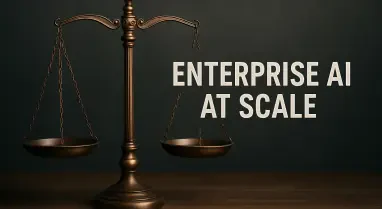The world of data management in 2025 presents an intricate tapestry of challenges and technological advancements, highlighting Managed File Transfer (MFT) systems as crucial elements of secure and compliant information exchange. The growing demand for robust, secure, and efficient data transfer solutions marks a significant evolution from traditional file-sharing methods. MFT software has emerged as indispensable in optimizing organizational data flows, safeguarding data integrity, and ensuring regulatory compliance across various industries. Widely adopted today, MFT systems are crucial for entities grappling with increasing volumes of sensitive data exchange in sectors such as healthcare, finance, and government.
The Essence of Managed File Transfer in Today’s Context
Enhancing Security and Compliance
The sophistication of MFT solutions lies in their ability to ensure secure data transfers, significantly reducing risks associated with breached data confidentiality. Modern MFT platforms come equipped with comprehensive encryption capabilities, ensuring data remains secure across networks and preventing unauthorized access. They also adhere to rigorous compliance standards such as HIPAA, GDPR, and SOX, making them a trusted choice for industries where meticulous data handling is a regulatory necessity. Each file transfer is meticulously logged and audited, providing an unimpeachable audit trail that meets diverse compliance requirements.
Additionally, MFT solutions offer impressive scalability, allowing seamless integration with existing corporate systems without compromising security protocols. Organizations can now confidently engage in complex data exchanges knowing that robust measures, including real-time monitoring and role-based access controls, are in place. This ensures the right individuals have adequate access while restricting unauthorized entries, effectively enforcing data privacy and security across institutional frameworks.
Automating and Optimizing Data Workflows
Automation distinguishes MFT solutions by streamlining routine data transfer activities, thus minimizing manual intervention while boosting operational efficiency. This automation encompasses scheduling file transfers, generating real-time alerts for process anomalies, and enabling policy-driven actions for seamless and timely data movement. Enterprises today prioritize automating repetitive tasks to mitigate human error and focus employee efforts on more strategic responsibilities.
MFT systems provide a cohesive interface to monitor, control, and manage data flows, offering empowerment through centralized dashboards. This centralization enhances visibility into data operations, allowing IT teams to manage tasks more effectively and allocate resources efficiently. Scalability is key, permitting businesses to adapt their data transfer solutions according to evolving requirements without extensive reconfiguration.
Evaluating Leading MFT Solutions
The Robust Infrastructure of Progress MOVEit
Progress MOVEit stands out for its exceptional focus on security and compliance, addressing stringent industry standards. It incorporates comprehensive encryption, audit logs, and policy-based automation features that underpin regulatory adherence. MOVEit is commended for its intuitive user interface which simplifies navigation, although users often note backend complexity as a potential hurdle. The platform’s competent vendor support further elevates its attractiveness, ensuring swift resolutions to user concerns and issues.
MOVEit extends beyond mere compliance, emphasizing the user experience journey. Its comprehensive offer includes end-to-end encryption, which ensures the utmost protection for data in transit. By facilitating transparent audit cycles and leveraging policy-driven workflows, organizations are equipped to respond promptly to compliance audits and internal reviews. However, the intricate nature of its backend processes warrants a deeper look at potential user challenges that could arise during deployment.
AWS Transfer Family’s Seamless Cloud Integration
AWS Transfer Family embraces the growing trend of cloud-native solutions, offering seamless integration with Amazon S3 and Elastic File System (EFS). This integration empowers enterprises with infrastructure-free management while leveraging AWS Identity and Access Management (IAM) for enhanced security. Initial configurations may present complexities, particularly concerning identity provider setups; nonetheless, the benefits offered by infrastructure-free management are substantial.
The AWS Transfer Family underscores interoperability, ensuring unhindered access to its rich suite of AWS services. This compatibility enhances data transformation processes, as files hosted on the cloud can interact readily with AWS’s analytics and machine-learning capabilities. The service’s reliability, combined with AWS’s global reach, makes it an essential solution for enterprises seeking cloud-native operational efficiencies. Despite documentation improvements being needed, its potential benefits overshadow these initial setup challenges.
Innovations and Market Trends
Emphasis on Cloud-Native and Hybrid Deployments
The transition toward cloud-native and hybrid MFT deployments reflects a broader industry shift, offering businesses superior flexibility in managing data transfers. Cloud capabilities enable IT departments to deploy, manage, and access MFT solutions from virtually anywhere, aligning with today’s dynamic workforce trends. Hybrid deployments can bridge on-premises and cloud environments, accommodating diverse data handling needs and ensuring business continuity.
Hybrid deployments emphasize enriching traditional IT landscapes with agile, cloud-based innovations. They facilitate adaptive scaling, rendering them highly suitable for enterprises with volatile data requirements. As organizations strive to unify their data ecosystems, hybrid solutions offer a balanced approach that enhances efficiency while leveraging the respective strengths of on-premises and cloud architectures. This dual approach also ensures data residency concerns are managed effectively, an essential factor in adhering to global compliance regulations.
Reduced Manual Interventions Through Enhanced Automation
Automation continues to revolutionize MFT solutions, drastically reducing the scope for manual errors while enhancing operational efficiency. Automated processes govern everything from file transfers to generating insights through real-time data analytics, enabling proactive decision-making. Automation is particularly beneficial in minimizing errors and resource costs associated with manual interventions propelled by human oversight or misjudgment.
Organizations are increasingly seeking MFT solutions that go beyond basic automation capabilities, driven by the potential for intelligent decision-making through data analytics integration. Detailed analytics can provide actionable insights into resource allocation, system health, and potential areas of improvement, fostering a data-driven decision-making culture. Enhanced automation strengthens the IT infrastructure, minimizing the need for constant human oversight while allowing staff to focus on more strategic objectives that drive organizational growth.
Critical Analysis of Current Solutions
GoAnywhere MFT’s Centralized Controls
GoAnywhere MFT is renowned for its robust centralized automation, control, and integration features. The solution enables seamless file workflows, ensuring uninterrupted data processing that aligns with organizational requirements. With powerful automation capabilities under its belt, GoAnywhere MFT appeals to enterprises aiming to streamline complex data exchanges effortlessly.
Another dimension of GoAnywhere MFT is its dedicated integration with AWS for post-processing and access control. This integration expands its usage scenarios, making it an ideal choice for businesses invested in cloud-based architectures. However, some limitations in protocol support have been noted, necessitating potential deployment adjustments to fully harness its functionalities as a cloud-native solution.
The Flexibility and Ease of Use of Files.com
Files.com distinguishes itself with a focus on ease of use and flexibility, catering especially to small businesses and startups. It enables users to easily handle file access controls while supporting automation through rule-based workflows. Files.com emphasizes user accessibility, providing straightforward solutions for users unfamiliar with complex IT systems.
While Files.com ensures non-technical teams can perform basic operations effortlessly, it also allows for significant improvements through enhanced branding customization and file sorting capabilities. By addressing these areas, smaller enterprises can efficiently expand their capabilities and streamline data processes without the burden of mastering extensive technical nuances.
Overarching Observations and Industry Implications
Consensus on Security and Scalability
The MFT landscape is underpinned by a genuine consensus emphasizing the importance of security, scalability, and seamless integration across systems. Industry feedback consistently highlights automation and ease of use as critical components influencing widespread adoption. MFT systems must cater to diverse organizational structures, balancing complex security needs while ensuring user-friendly interfaces that simplify operational management.
Enterprises increasingly value solutions that offer strong security frameworks combined with scalability to address growing data volumes. As global regulatory landscapes evolve, businesses must stay ahead by ensuring data management solutions remain compliant with emerging standards while adapting to new technological advancements that bolster organizational agility.
Future Directions and Innovations
As we look towards 2025, the landscape of data management is becoming increasingly complex, marked by both evolving challenges and technological breakthroughs. A central component of this landscape is the role of Managed File Transfer (MFT) systems, which have become essential for secure and compliant information exchange. The need for reliable, secure, and efficient data transfer solutions is driving a significant transformation from outdated file-sharing methods to more sophisticated systems. MFT software has proven indispensable for optimizing the flow of organizational data, safeguarding the integrity of information, and ensuring adherence to regulatory standards across diverse industries.
In today’s digital age, the adoption of MFT systems is widespread. These systems are especially critical for organizations that handle mounting volumes of sensitive data, particularly in sectors like healthcare, finance, and government. Entities in these fields face immense pressure to not only protect data but also efficiently manage its transfer, making MFT systems an integral component of their operations. As data continues to grow in volume and complexity, the importance of MFT systems in maintaining secure and compliant data exchanges will only intensify, ensuring they remain at the forefront of data management strategies.






